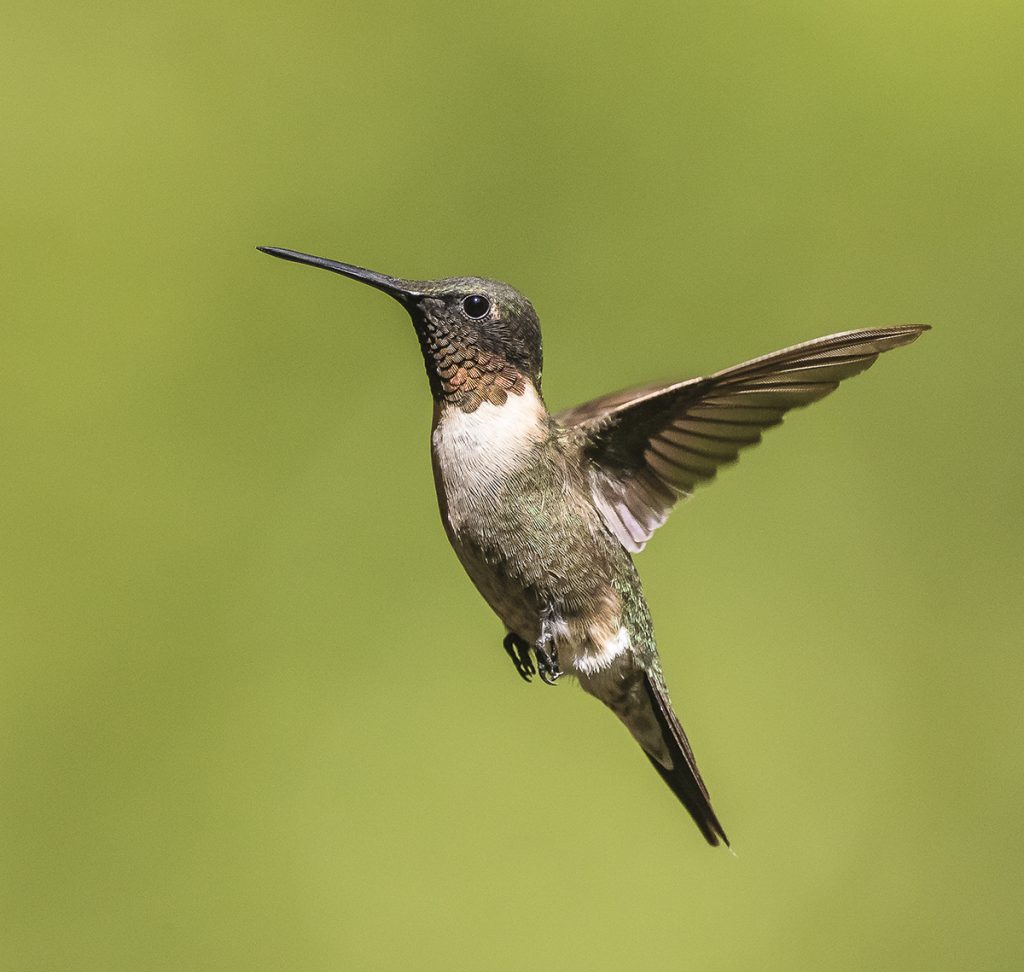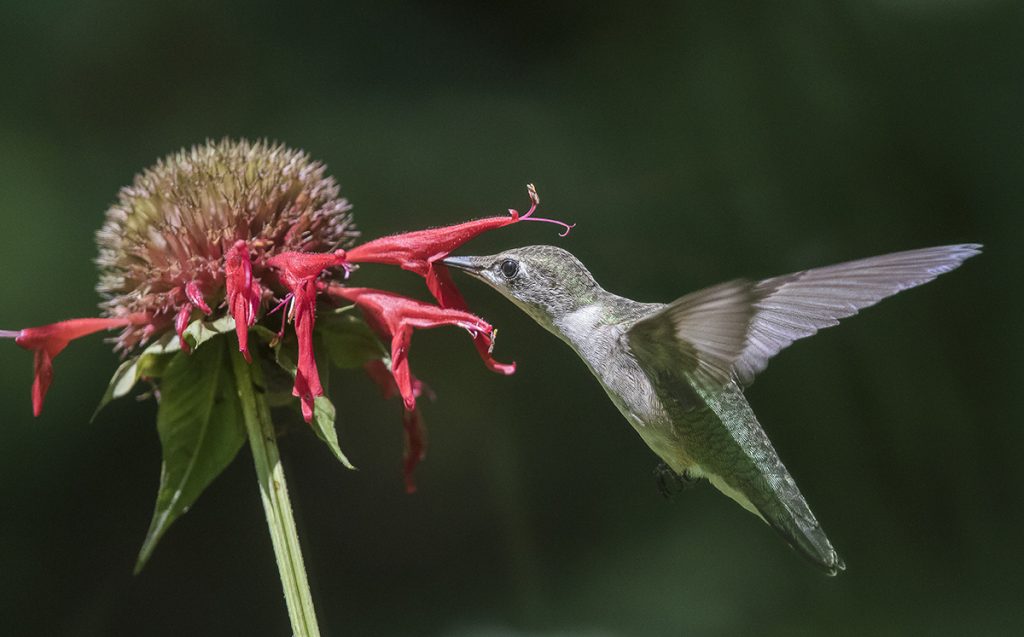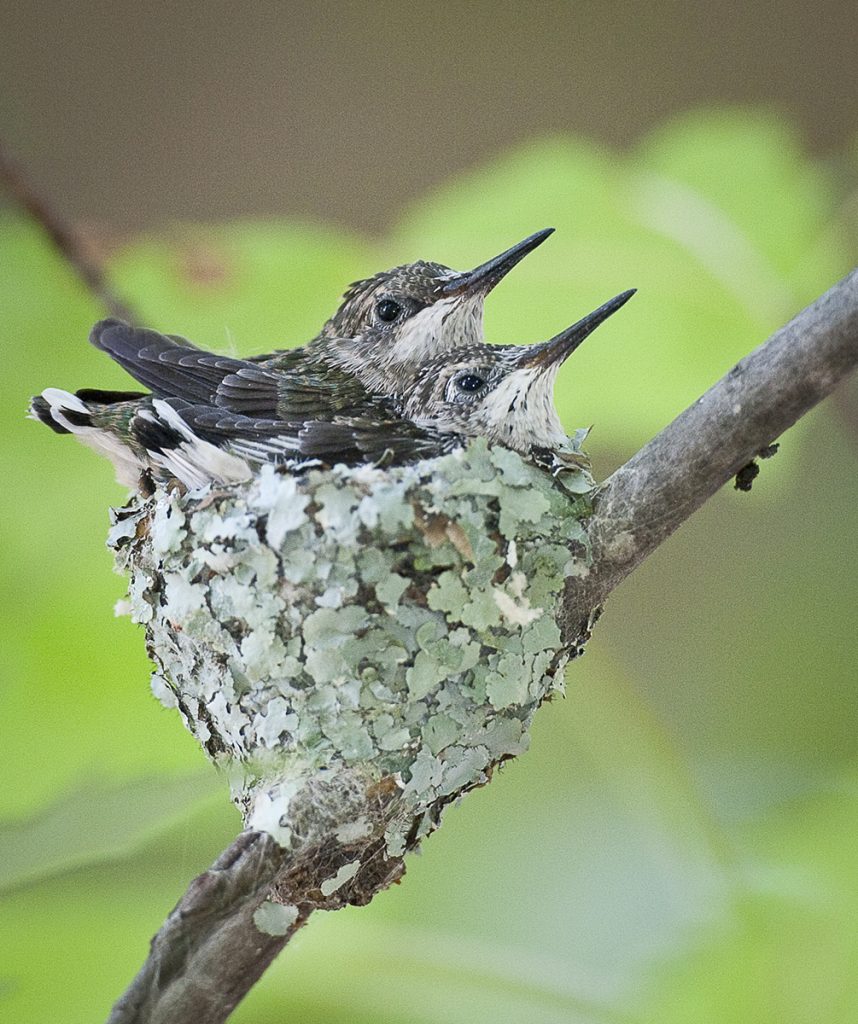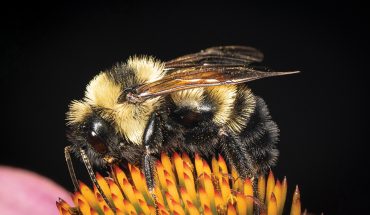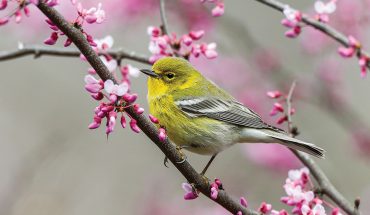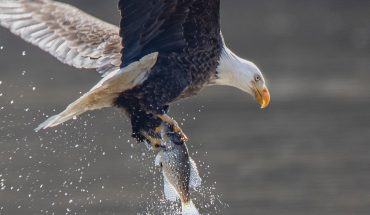Learn about Ruby-throated Hummingbirds, the only species of hummingbird that nests in the eastern United States.
by Mike Dunn
Though I am not a big fan of our hot and humid summers here in the Piedmont, I do enjoy the diversity of life forms in our yard and woods this time of year — so many flowers in bloom and insects and spiders taking advantage of our native plant inventory!
But a highlight of any summer day is when a flying jewel zips by. I’m referring to Ruby-throated Hummingbirds, the tiny high-speed dynamos that make North Carolina their summer home. An average ruby-throat weighs a little more than a penny, and they are generally found in our area from early April through September, though I have seen them as late as October. They are the only species of hummingbird that nests in the eastern United States.
I am fascinated by these little feathered yard missiles. My first “aha” moment came when I was a young boy visiting my Aunt Ruth in the Virginia mountains. One day, she called me over to show me something she’d found in a flowering shrub. When I looked in, I saw a tiny bird nest about the size of a large walnut, with two white eggs that looked like small jelly beans.
Then we heard a buzzing sound and a hummingbird streaked overhead chittering at us. We realized that we were upsetting her and we backed away to watch from a safe distance as she went in to incubate her eggs.
Since then, I have found a few other hummingbird nests, but it is not an easy task. A departed friend and expert naturalist, Paris Trail, had a proven technique and would find nests almost every year in his open woodlands in Edenton. He watched the females as they departed his feeders, then walked out in the direction they flew as far as he was able.
Then he would wait until they made another trip to the feeder and flew back over him on their way to the nests. He repeated this wait-and-follow strategy until he found the nests (or lost track of the mothers). I have tried but been unsuccessful thus far in our dense woods.
Nests can be anywhere from a few feet to 50 feet in the air and are almost always on a downward sloping branch. They blend into their surroundings very well, being constructed of soft plant fibers, covered in a layer of lichens and bits of moss, and held together by spider silk.
The nest walls are pliable and flex as the young birds grow and move around. The female does all the work of nest building, incubation of her eggs (almost always two) and rearing of the young.
Adult birds feed on nectar from a variety of native and non-native flowers, with tubular red flowers being a favorite. Studies have shown they also eat a large quantity of tiny insects and spiders. Females regurgitate their food to the young in what appears to be a not-so-loving manner: by inserting her bill into the open gape of the young and pumping vigorously (apparently young hummingbirds have no gag reflex). Females in our region may have two broods, with the last one occurring in late July or early August.
Ruby-throated Hummingbirds are certainly one of the most-watched birds in our state given the huge number of feeders placed out for them every summer. The standard formula for creating your own hummingbird food is to combine one-quarter cup of refined white sugar in one cup of hot water until the sugar is dissolved. (Do not add red food coloring.)
Keep your feeders cleaned regularly by washing with hot water and a brush. In hot weather it is best to change your feeder solutions every couple of days, although I usually don’t need to worry about that because the birds drain the feeders quickly.
I start with one feeder in April (the males are the first to arrive and set up territories in the spring), add more as the females arrive and finally have four up in the yard when the young start leaving the nests. I place the feeders so they are far apart, and some are visually separated from each other around corners of the house.
This seems to help reduce the dominance of the feeder by a particularly aggressive hummingbird. It also helps that our place has a wide variety of native plants for their dining delight. Favorites include Coral Honeysuckle, Bee Balm, Jewelweed, Eastern Red Columbine and Cardinal Flower.
A favorite hummingbird encounter happened two years ago when I went out to bring in a feeder for a cleaning and refill. The ruby-throats frequently zoom close when I am putting up or taking down feeders, but this time, as I grabbed the feeder and lifted it off the hook, a hummingbird landed and started feeding. It was an immature male that occasionally glanced my way as I stood there with the bird at arm’s length.
They usually only stay a few seconds at a feeder, but this one kept on, so I slowly pulled the bird and tube closer. I finally had it about 8 inches from my face! What an incredible experience. He finally streaked off (my arm thanked him) when another adult male came in for a challenge. The aggressor veered off when he realized there was a new gray-haired hanger for the feeder.
While that was a very special moment, my mom recently shared one that tops it. She loves to sit on her front porch in the evening and watch the hummingbirds as they contest the air space around her feeder. She happened to glance down and saw that one had landed on her knee and was just taking it all in. She said it sat there for several seconds until she accidentally moved her leg and it zoomed off.
And zoom they do! Here are a couple of fun facts about hummingbird flight: Hummingbirds can fly forward at speeds up to 50 miles per hour. The number of wing beats is also impressive — 40 to 80 beats per second! And while most other birds fly by generating lift on the downstroke of the wing, hummingbirds don’t strictly flap but rather rotate their wings 180 degrees with each wingbeat. This can generate lift on both sides of the wing, allowing them to hover, fly backward and even upside down briefly.
Another very noticeable thing about these marvelous birds are the bright flashes of red on the throat of the males. These flamboyant feathers are called a gorget (pronounced gor-jit), named after the protective metallic throat collar worn in days of yore by a knight-in-armor.
Unlike the brilliant red feathers of a cardinal, which are colored by a pigment, the male hummingbird’s red feathers are the result of iridescence. Microscopic grooves and bubbles on the feathers cause light to reflect and refract off of them, making the color you see change depending on the angle you view it. In some angles, the throat looks dark, even black.
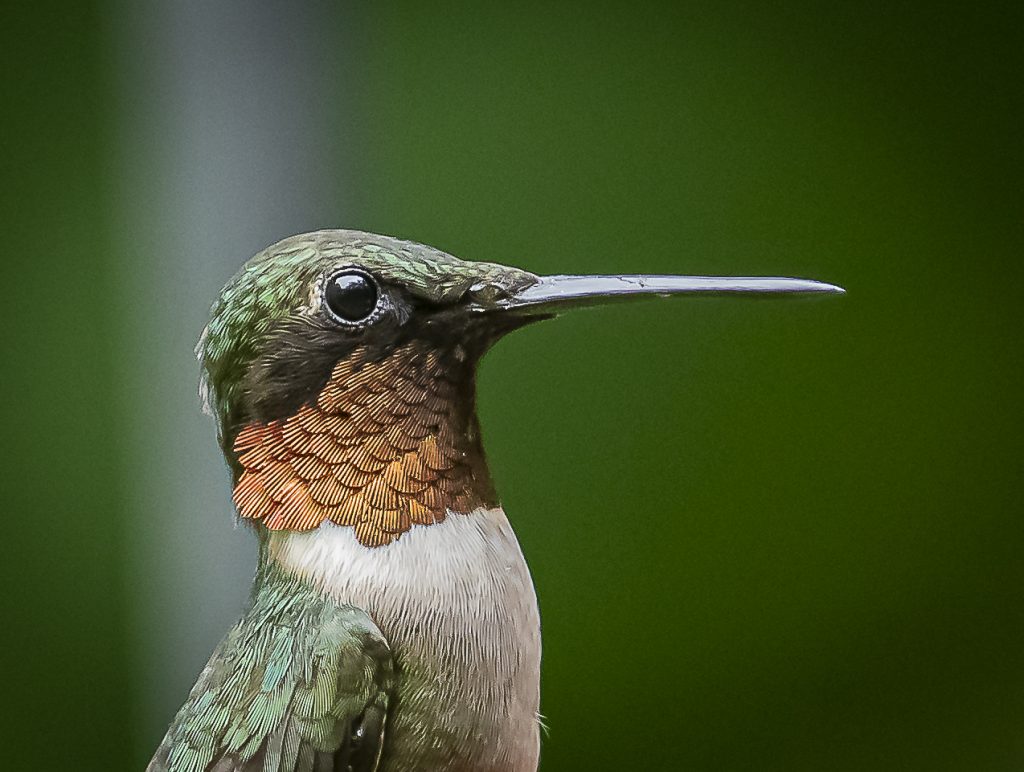
But a slight turn of the head and you see a fiery red flash. Male hummingbirds use this flashiness to attract females and to warn off potential rival males.
The adult males will soon start leaving for the wintering grounds in Mexico and Central America. Over the next several weeks females and young (males look like females their first few months) will follow, and our yard will once again lack the energy and excitement of their presence.
But some lucky North Carolinians have hummingbirds even in winter. Susan Campbell, a friend and research associate at the NC Museum of Natural Sciences, has been involved in a study documenting and banding hummingbirds in our state for over 20 years.
Her research is now under the auspices of the Cape Fear Bird Observatory, and what we know about winter hummingbirds in our state is largely due to her work. To date, 11 species of hummingbirds have been observed in winter; they often spend the entire winter in one location, and some have returned to winter at the same place year after year.
Most, other than the Ruby-throated Hummingbird, are winter migrants from western states, the most common of these species being the Rufous Hummingbird (any hummer in your yard with a brown back is a male Rufous).
So while you can expect the most hummingbird activity this time of year, consider maintaining your feeder through the winter — you just may end up with a special guest.
This article originally appeared in the August 2023 issue of WALTER magazine.

